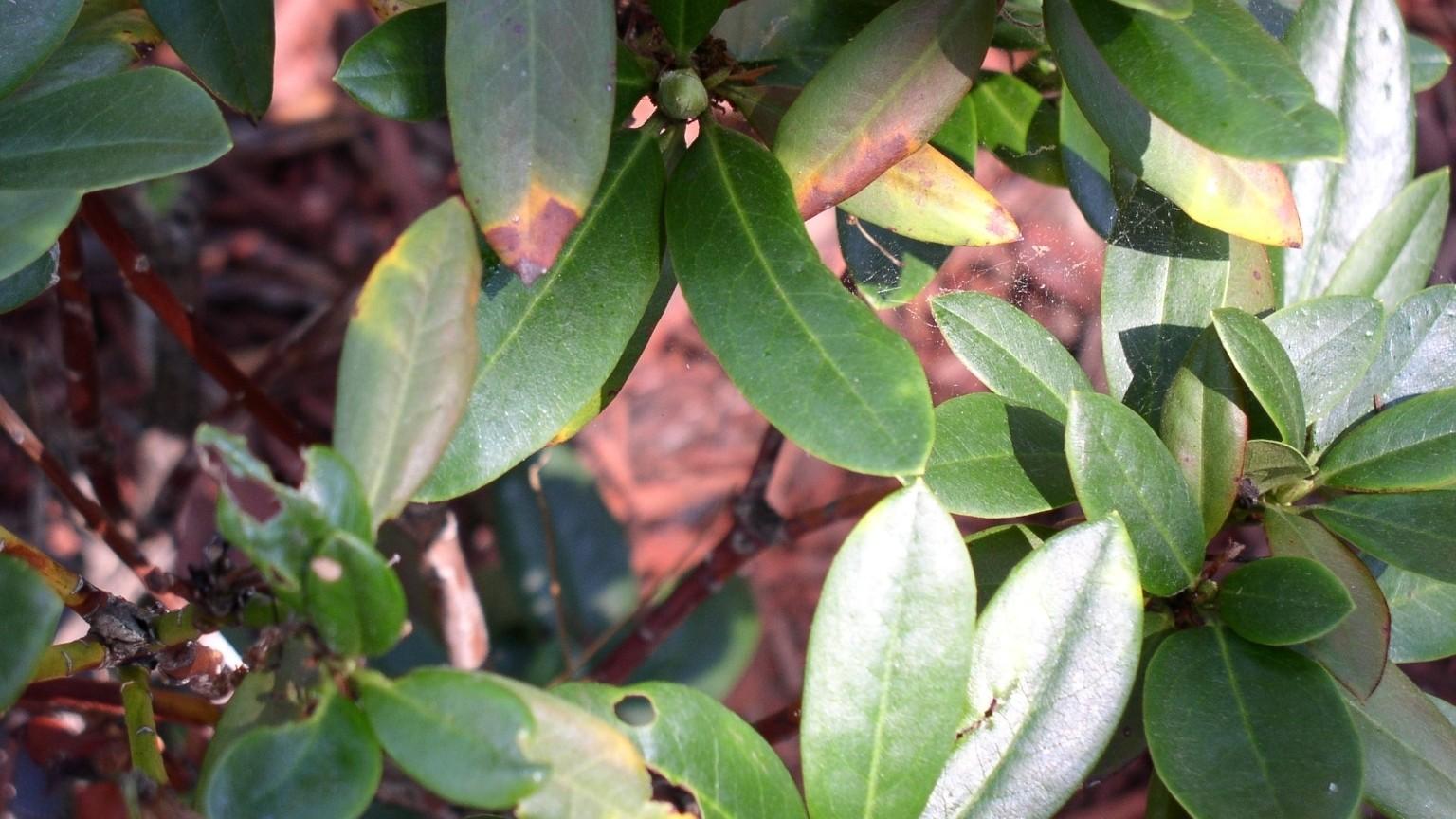Key points
- This soil pathogen exists in low levels throughout Maryland but becomes a problem in wet sites.
- As roots are killed the leaves begin to turn a lighter green and eventually yellow.
- Infected plants initially appear wilted. As symptoms progress leaves roll inward towards the midrib and turn brown.
- Highly susceptible cultivars can die within two weeks, where as more resistant plants may not die until many weeks after the plants have developed the initial wilt symptoms.
- The entire root system may become diseased or portions may escape infection and support the plant until other stress factors cause death.
- On older plants, symptoms of root rot may be present a season or more before death. In such cases, plants often exhibit symptoms on part of the plant. The plants also decline in vigor and suffer additional damage from other pathogens or insect pests.

Shrubs affected by phytophthora root rot. Photo: William Fountain, University of Kentucky, Bugwood.org
Phytophthora dieback, although uncommon in the landscape, is a distinct phase of the Phytophthora disease syndrome on rhododendrons, azaleas, leucothoe, and Japanese andromeda (Pieris japonica). It can be brought into the landscape on infected plants and can be severe on plants grown under overhead sprinkler irrigation. The disease occurs when the pathogen is splashed onto the foliage. Thus, infected plants may show symptoms on leaves and shoots, but may have healthy root systems. Plants with dieback develop symptoms on the current season growth. Mature leaves are often resistant, however, if they become infected, they usually fall prematurely. Infected leaves show chocolate brown lesions that often expand and cause dieback of the shoot tips. Infected leaves droop and curl towards the stem. Diseased leaves remain attached to the stem. Growth of the pathogen through the midrib tissue often produces a V shaped lesion that extends along the leaf midrib into the stem.

Phytophthora dieback symptoms on Rhododendron
Prevention and management
- The best disease prevention options are to avoid poorly drained compacted soils, low areas that collect water runoff and locations near downspouts. Construction of raised beds or grade changes may be needed to ensure proper drainage.
- All newly planted rhododendrons should be watched closely for symptoms, and infected plants or prunings should be removed promptly.
- Resistant varieties are available. However, if they are flooded for 48 hours or longer, or are drought stressed to the point of wilting, resistance is temporarily lost and the fungus can invade.
- Symptoms on older plants can be caused by introducing infected plant material into the same planting bed, changes in water drainage patterns, and low plant vigor.
- Fungicide treatments will not cure plants that are showing symptoms.
